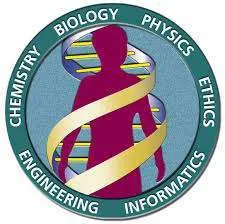In a truly grand feat of modern science, The Human Genome Project, an international collaborative effort, set out in 1990 to map our genetic makeup using diverse human genetic samples. In 2003 the project was completed, ultimately showing about 20,000 human genes. Since that project’s completion, with ever-improving DNA sequencing technology, genomics researchers continue to gather more and more information about human DNA.
A single human cell contains a mind-numbing 6 billion base pairs (each base pair is one of four types of nucleic acid molecules) in its DNA, organized into 23 pairs of chromosomes. Fascinatingly, only about 1.5 percent of our DNA actually codes for proteins, while the vast remainder is noncoding DNA, serving a regulatory function or, at least as far as we understand, no function at all.
In 2007 the first individual human genome was sequenced and published. In 2008, James Watson (as in, the 1962 Nobel Prize winning Watson and Crick model of the DNA double helix) poetically had his genome sequenced and published. The ability to sequence an individual human’s genome held much promise, we hoped, in regard to predicting illness and personalizing medical interventions. But in 2020, this promise remains very much unfulfilled. In most cases primary care physicians don’t yet utilize genomics information in our daily practice. Why is this?
The short answer: It’s complicated. In some specific instances, genetic information can clearly convey an increased risk for disease. One example of this might be the BRCA gene mutation and associated risk of future breast or ovarian cancer. Because this specific gene mutation is so tightly linked with elevated risk, testing and finding the mutation in an individual (based on their family history or known relative with a mutation) can have direct practical implications on strategies for cancer screening or even consideration of surgery to remove the at-risk tissue.
Scenarios like BRCA mutation are outliers, however. When we look to common diseases, such as cardiovascular disease or diabetes, finding genetic information useful gets, well, complicated. In these cases, what we have found is that many genes are involved, and it is extremely difficult to estimate how much a mutation in one of those genes affects overall risk. That’s not to mention all the environmental factors which may affect risk as much or more than the genetic profile.
Genomics remains a vast, new, and thus-far difficult to access specialty of medicine. At its current rate of growth, however, I am confident my previous statement will not remain true during my career in medicine.
Kelly Evans-Hullinger, M.D. is part of The Prairie Doc® team of physicians and currently practices internal medicine in Brookings, South Dakota. For free and easy access to the entire Prairie Doc® library, visit www.prairiedoc.org and follow Prairie Doc® on Facebook, featuring On Call with the Prairie Doc® a medical Q&A show streamed most Thursdays at 7 p.m. central.




